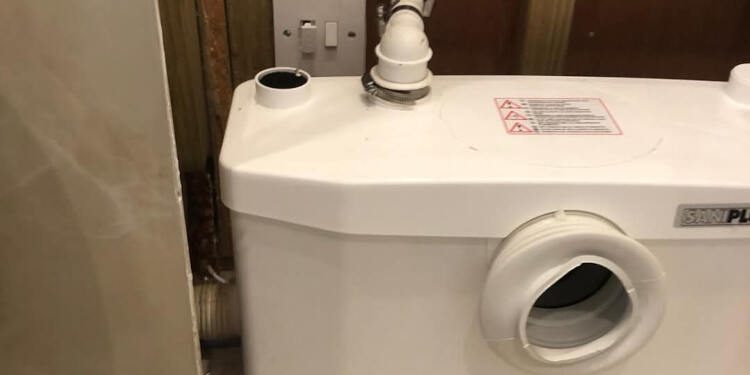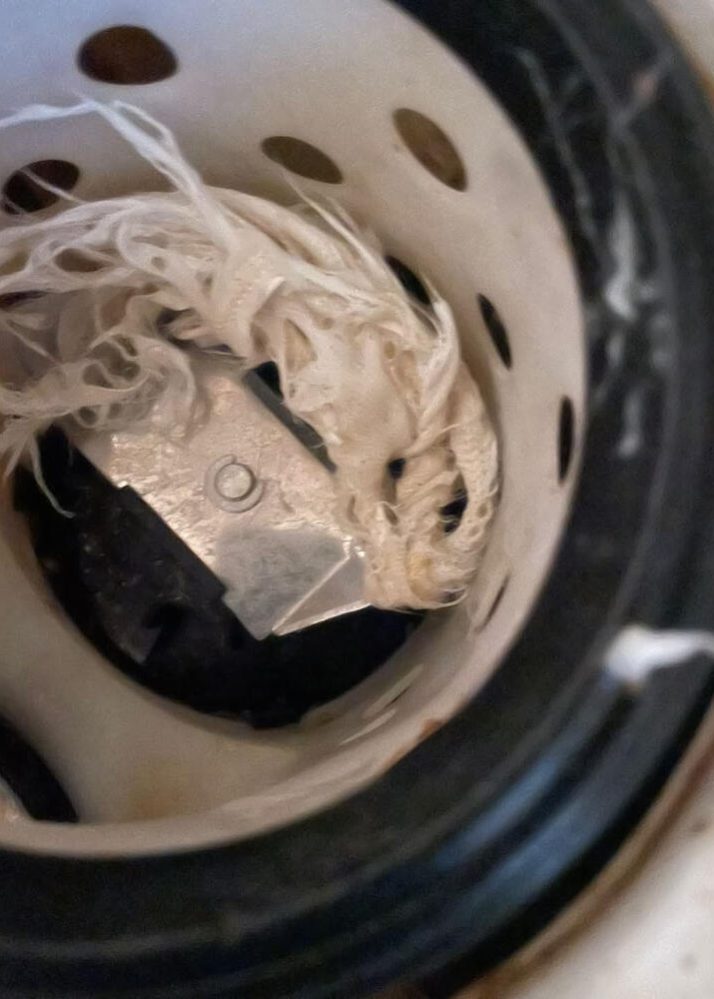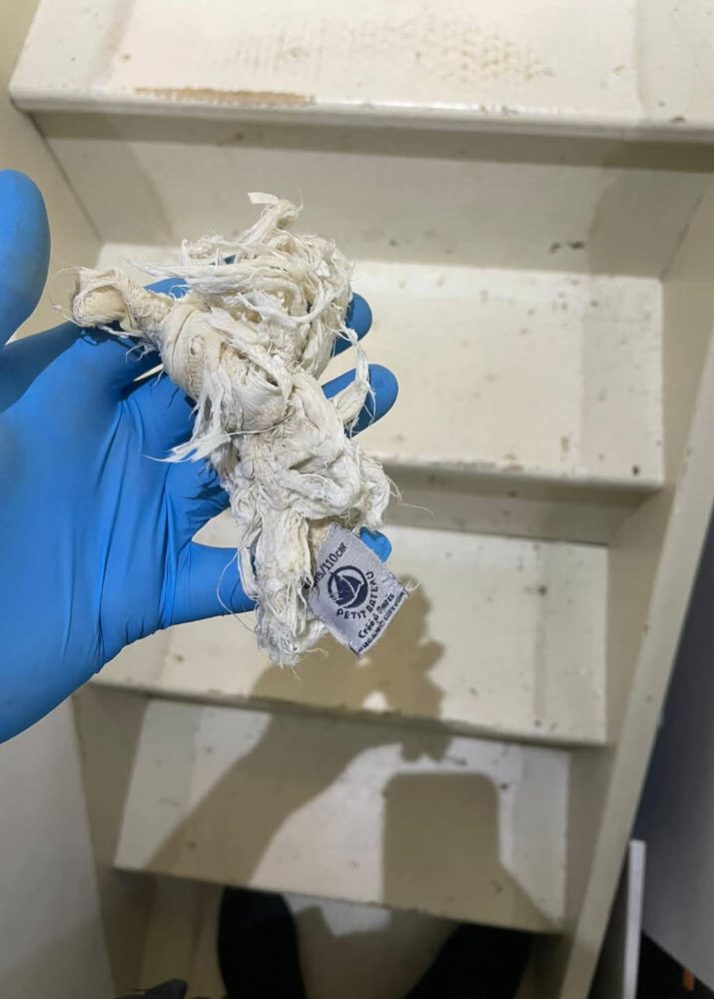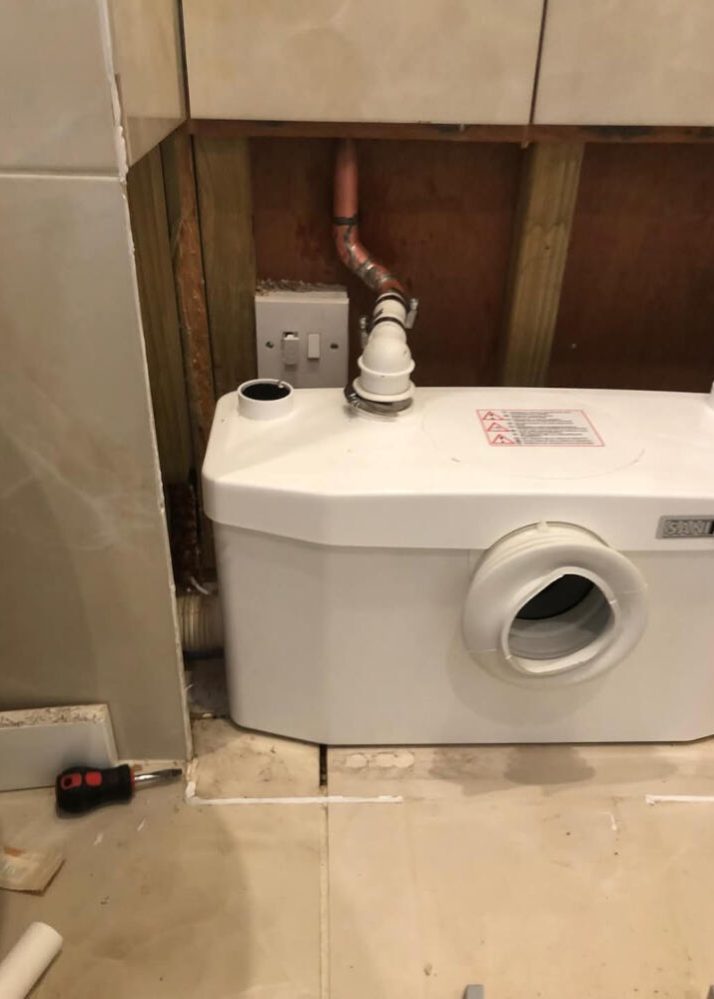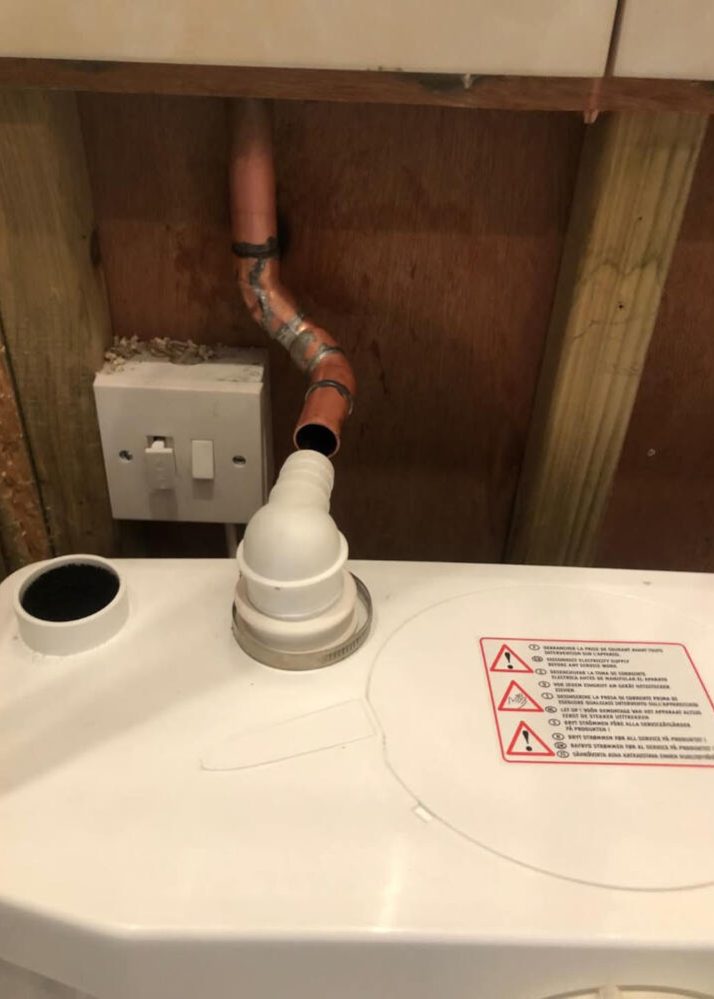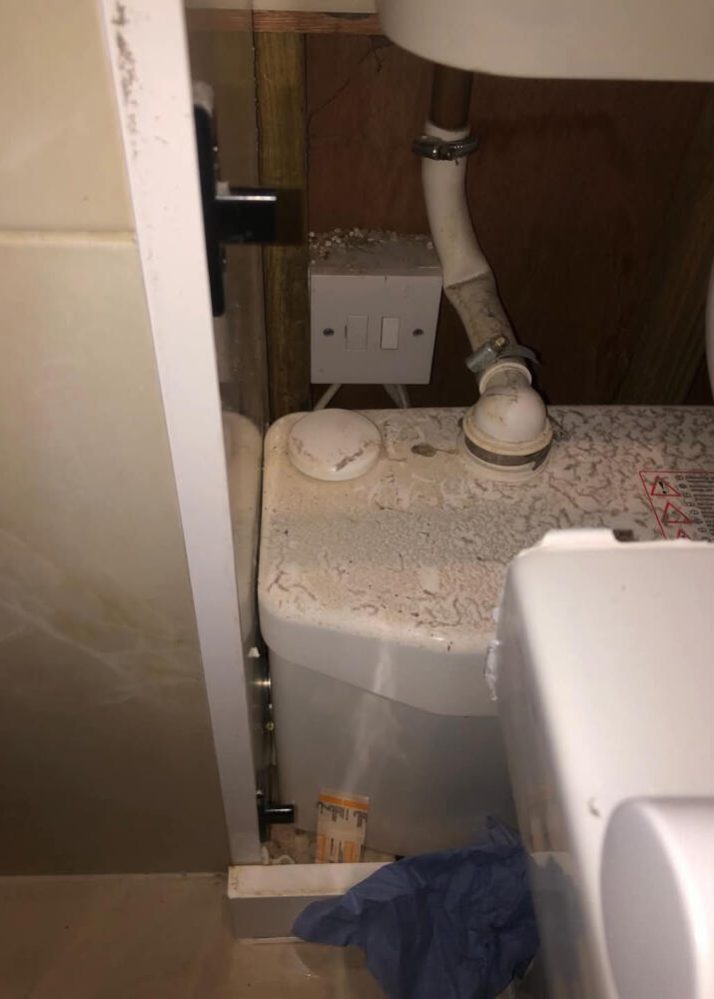A macerator toilet is a smart solution for spaces where traditional plumbing isn’t an option, but like any specialised system, it comes with its own set of challenges. The most well-known name in the macerator world is Saniflo—so much so that many people simply refer to any macerator as a ‘Saniflo,’ much like calling a vacuum cleaner a ‘Hoover.’ At Maintracts Services, we’ve handled countless macerator issues for our London clients, from stubborn blockages to improper installations.
In this blog, we’ll uncover the top four macerator problems—blockages, the switch turning off unexpectedly, incorrect installations, and issues caused by excessively hot water. Whether you’re dealing with a common fault or a Saniflo blockage, understanding these common pitfalls will help you recognise warning signs, troubleshoot effectively, and, most importantly, avoid problems in the first place. This is essential for landlords and anyone managing a shared toilet, where regular maintenance can save you from costly repairs. So, let’s flush out the details and keep your macerator running smoothly!
1) Blockages And Motor Failure
Macerator toilets are incredibly useful, but they can be surprisingly sensitive to misuse. Blockages are one of the most common issues we encounter, and they’re almost always caused by items being flushed that shouldn’t be.
In all my years working at Maintracts, I can count on one hand the number of times I’ve needed to call Saniflo out for a fault with the unit itself. Their robust warranty ensures the units are reliable, but most failures we see are due to misuse rather than faulty components.
Here’s how it works: macerators contain blades that spin and break down waste every time you flush. However, these blades can become jammed when synthetic materials, like wet wipes, nappies, or moist toilet tissues, are flushed. Even regular toilet paper can cause problems if used in excess, particularly thicker, multi-ply varieties. While single-ply paper is less likely to clog the system, the real issue is the amount of paper being flushed at once. Macerators are designed to process digested waste and minimal paper—they’re not fans of fibre-heavy materials!
Our plumbers have seen their fair share of unusual blockages over the years. One memorable case involved a blockage caused by olive stones—someone must have eaten gallons of them! Other common culprits include sanitary products, which are particularly problematic in communal spaces like hairdressers, beauty salons, and other shared facilities. These environments often lead to frequent misuse, with customers ignoring warnings and flushing synthetic materials that the macerator just can’t handle.
Our team recently resolved this blocked macerator toilet by removing the underwear that someone had flushed causing the blades to jam!:
Repeated blockages don’t just cause inconvenience—they also cause serious wear and tear. Each time the blade jams, it puts strain on the motor. Over time, repeated misuse can lead to complete motor failure, turning a manageable problem into a costly repair or replacement.
To avoid these issues, stick to flushing only waste and small amounts of toilet paper. For communal or high-traffic spaces, it’s worth considering alternatives to macerator toilets (if possible) to reduce the risk of frequent breakdowns.
Saniflo provides a small red sticker with their macerator units designed to be placed in a visible spot, such as on the underside of the toilet seat or the toilet cistern. The sticker serves as a clear reminder, with a message along the lines of “Do not flush synthetic items or non-flushable materials down this toilet.” While it may not be the most aesthetically pleasing addition to your bathroom, it’s an important precaution. Unfortunately, even with the sticker in place, many people still ignore the warning, leading to avoidable blockages and damage.
Warning Signs To Look Out For
- Toilet not flushing properly or waste not being cleared after a flush.
- Unusual sounds from the macerator (grinding, stuttering, or whirring noises).
- Frequent blockages that require repeated clearing.
- Slow flushing or water rising in the toilet bowl before draining away slowly.
- Burning smell from the motor due to repeated strain or overheating.
Saniflo Toilet Troubleshooting Tips
- Ensure only waste and a small amount of toilet paper are flushed—avoid wet wipes, nappies, or synthetic products.
- Regularly clean the macerator to prevent buildup.
- For shared or high-traffic toilets, consider an alternative system to prevent misuse.
2) Turning Off The Switch
One of the most common issues with macerator toilets is when someone inadvertently turns off their electrical supply. Because electrical switches aren’t allowed inside bathrooms, the switch for the macerator is usually located outside—in a nearby hallway, bedroom, or ensuite area. This setup, while practical, can lead to confusion, especially in tenanted properties or homes with curious children.
It’s all too common for someone to see the switch and think, “What does this do?” or “Why is this on when it doesn’t seem to do anything?” They flip it off, unaware that they’ve just cut power to the macerator. Later, when the toilet stops flushing or becomes blocked, they often don’t connect the dots to the switch they turned off earlier.
To avoid this problem, it’s always a good idea to clearly label the switch so that everyone knows what it controls. In households with young children, who love to explore and fiddle with buttons and switches, the risk is even greater. Rental properties are particularly susceptible to this issue, as tenants may not be familiar with the system and families with small children may unintentionally switch off important controls.
Proper labelling, educating tenants, and even placing the switch out of easy reach of little hands can save a lot of frustration and prevent unnecessary service calls for a “mysterious” macerator issue!
Warning Signs To Look Out For
- Toilet not flushing or macerator not operating, despite seemingly being functional.
- Electrical supply issues with other electrical appliances (like lights or outlets) in the same area.
- Toilet working intermittently - working some days, not on others.
- Frequent issues in rental properties or households with young children.
Troubleshooting Tips
- Check that the macerator’s power switch is in the "on" position.
- Label the switch clearly, so everyone knows what it controls.
- If you have young children, consider placing the switch out of their reach to avoid accidental turning off.
3) Incorrect Installation
Another common issue with Saniflo toilets is improper installation—though never by our expert plumbers, of course! The outlet pipework for a macerator system uses small-diameter piping, which requires careful planning and specific fittings to ensure smooth operation.
One critical rule is to avoid using tight 90° elbows in the pipework. Instead, all fittings should be 45° elbows to allow waste to flow properly. The pipe must also be routed in a precise way to minimise resistance and maintain efficient pump operation. Incorrect installation can lead to frequent blockages, excessive strain on the pump, and ultimately, a system that doesn’t perform as it should.
Ensuring the pipework is installed correctly from the start is essential to avoid costly repairs and ensure the longevity of your macerator system. Always trust experienced professionals who understand the specific requirements of these systems.
Warning Signs To Look Out For
- Frequent blockages or waste not being properly processed.
- Inefficient flushing or weak performance when the toilet is used.
- Water backing up or draining slowly from the toilet.
- Strain on the motor—macerator motor makes unusual noises or struggles to pump.
Troubleshooting Tips
- Ensure that the outlet pipe uses 45° elbows, not tight 90° ones, to avoid resistance.
- Make sure the pipework is routed as per manufacturer specifications for smooth waste flow.
- Always have a professional installer who understands the proper setup for macerator systems.
We recently addressed a poorly installed and bent Saniflo waste pipe, seamlessly replacing it with proper 45-degree fittings:
4) Water Temperature Issues
Another issue that can cause Saniflo macerators to fail is water that’s too hot. If you connect your macerator to appliances like a washing machine and run a very hot wash, or leave a shower, bath, or basin tap running for an extended period, the water temperature can exceed the macerator’s limits.
Saniflo units are designed to withstand certain temperatures for only a short time, and the motors are typically not continuously rated. This means that if the motor runs for too long, especially with hot water, it can overheat and burn out. While this issue isn't common in regular use, it’s important to avoid prolonged exposure to excessively hot water to prevent damage.
Saniflo’s widespread availability means replacement motors and parts are easy to find but replacing a motor can be costly. Given the time and expense involved in replacing the motor—plus the cost of labour—sometimes it’s more economical to replace the entire unit. Depending on the model, you might only save around £100 by repairing the motor rather than opting for a full replacement, and with a new unit, you get the added benefit of fresh components and warranty coverage.
Warning Signs To Look Out For
- Overheating motor or motor failure after using hot water (e.g., from a shower or washing machine).
- Funky smells or burning odours coming from the macerator.
- System failing to function properly after long periods of hot water usage.
- Inconsistent or weak flushing performance after using hot water-heavy appliances.
Saniflo Toilet Troubleshooting Tips
- Avoid running hot water for prolonged periods through the macerator.
- Don’t connect to high-temperature appliances like washing machines on very hot cycles.
- If you notice overheating, replace the unit or call a professional to inspect the motor.
In summary, while macerators can be an excellent solution for spaces where traditional plumbing isn't possible, they do come with their own set of challenges—especially in high-traffic areas or shared spaces. If you're careful and use them in the right setting, such as a downstairs loo for occasional use, they can be a real asset. However, if you’re dealing with a macerator that’s constantly getting blocked or isn’t working as it should, don’t hesitate to reach out. At Maintracts Services, we have extensive experience in diagnosing and repairing Saniflo toilet problems. If you're having issues with your unit, visit our Saniflo Repairs page or give us a call as soon as possible—we’re here to help get your system back in top shape!

